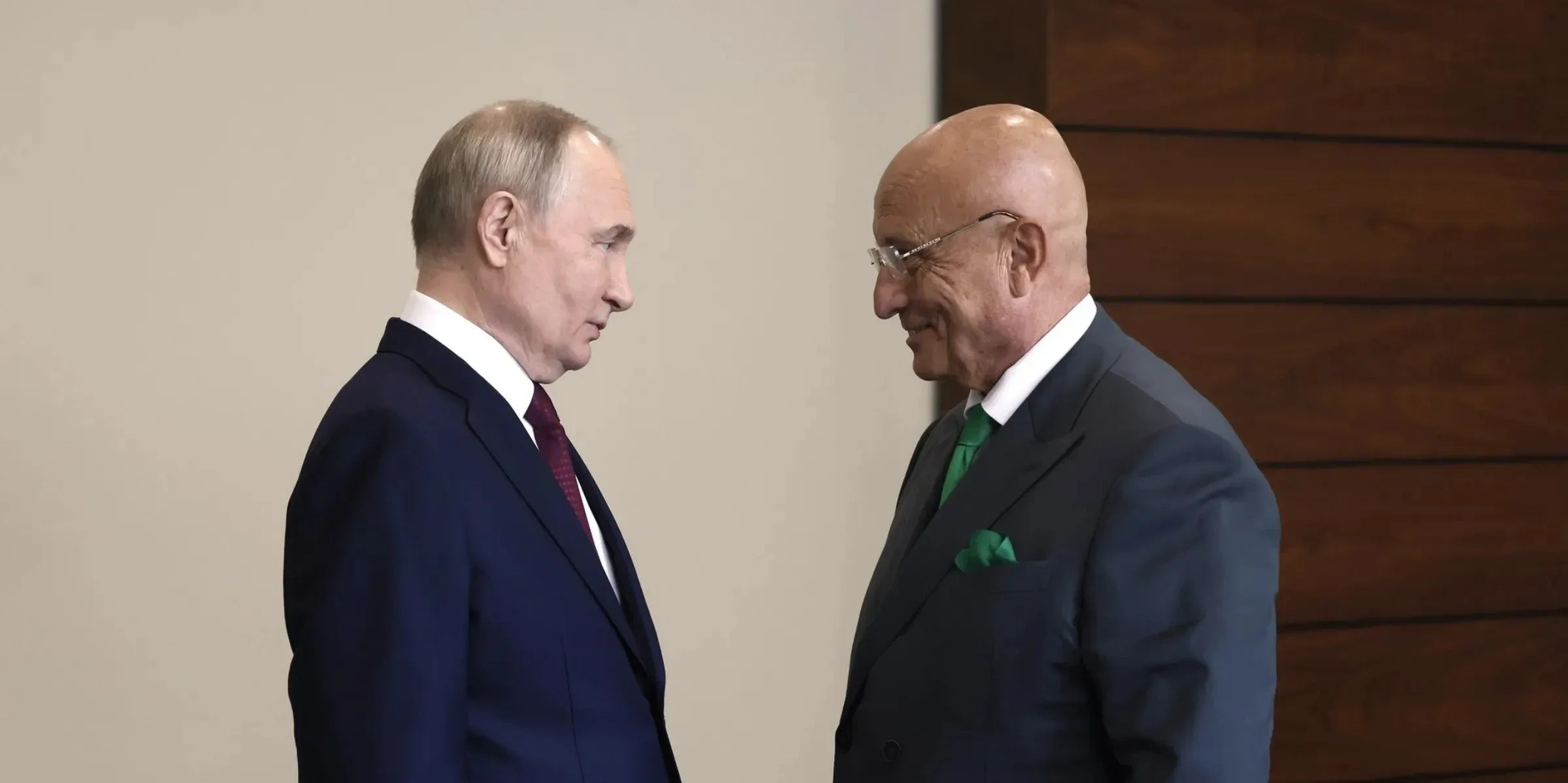Russia’s Nuclear Doctrine Shift: A Dangerous Escalation Amid the Ukraine Conflict
Sergei Karaganov and Vladimir Putin at the St. Petersburg International Economic Forum 2024. Photo: Important Stories
Russian President Vladmir Putin’s new nuclear doctrine shifted significantly from the country’s previous nuclear policy. The new amendments, announced in late September 2024, lowered the threshold for the usage of nuclear weapons. The previous doctrine Russia adopted allowed for nuclear retaliation only in response to an existential threat posed by a conventional attack. With the revision, nuclear retaliation from Russia can be triggered by any aggression by non-nuclear states that receive support from nuclear powers.
With the increasing support to Ukraine by Western nations, particularly through advanced military aid such as F-16 fighter jets and long-ranged missiles, Putin’s revision of Russia’s nuclear doctrine appears to be a direct response to the expanding role of NATO states in the conflict. The revision could be aimed to create broader ‘red lines’ to deter even further Western involvement in the war.
Some experts argue that these changes may primarily serve as a rhetorical deterrent, designed to inject uncertainty into the strategic calculations of the West. The wording of the doctrine left room for different interpretations, meaning that Russia can issue stern warnings without strict commitment to immediate nuclear action. This flexibility allows for signaling and black mailing but also introduces the risk of miscalculations on both sides, especially as tensions continue to rise.
While not fully dismissing the potential for escalation, NATO has emphasized that the aid to Ukraine remains focused on conventional defense measures and maintaining Ukraine's sovereignty. Deputy General Mircea Geoană stated that while the alliance is aware of Russia’s nuclear rhetoric, they do not view an imminent nuclear strike as likely. CIA Director William Burns acknowledged the real risks involved but downplayed the likelihood of nuclear escalation, emphasizing that Washington believes Moscow would be hesitant to cross that threshold unless facing imminent defeat.
Importantly, China and Brazil’s involvement demonstrates a growing international desire to end the conflict through diplomacy rather than continued military confrontation. However, the success of these peace efforts remains uncertain, especially with both Russia and Ukraine entrenched in their respective positions on key issues like territorial integrity and sovereignty.
While Russia's nuclear efforts added tension to the ongoing conflict, it remains to be seen how effective this strategic posturing will be. The West has so far tested and pushed Russia’s “red lines” without much response from the Kremlin. At the same time, Ukraine continues to receive military aid and conduct strategic strikes deep into Russian territory. Despite the threats from Moscow, the likelihood of an immediate nuclear escalation remains low, with both sides fully aware of the catastrophic consequences. However, as the war grinds on, the possibility of further escalation continues to hang over the conflict, as it is possible that Russia’s frustration with the West and their efforts to drag on the war reaches the threshold for nuclear retaliation.
Diplomatic efforts from countries not directly involved in the NATO-Russian confrontation like China and Brazil have emerged, advocating for peace and de-escalation. Although these initiatives have not yet significantly impacted the dynamics of the conflict, they reflect a growing international desire to explore alternatives to prolonged military engagement.


